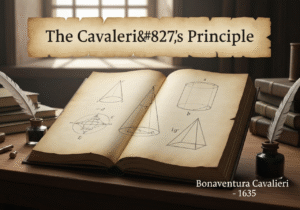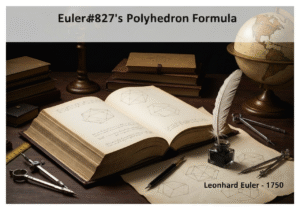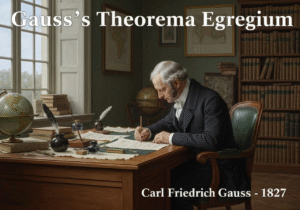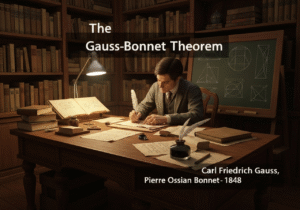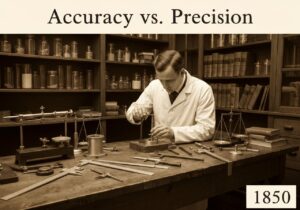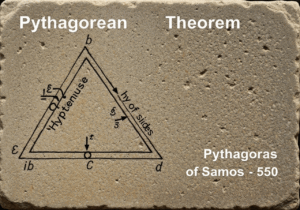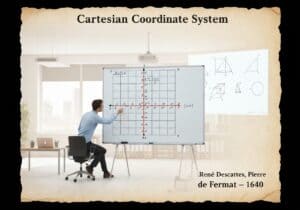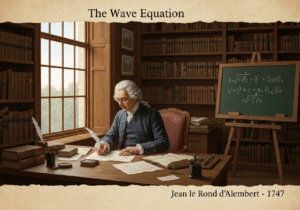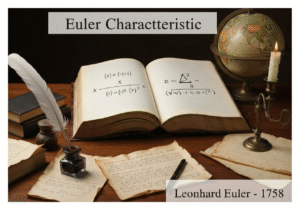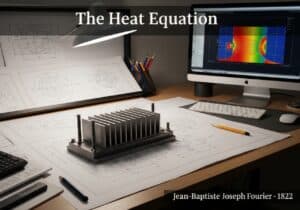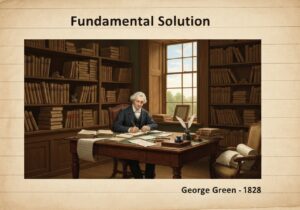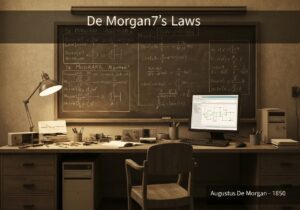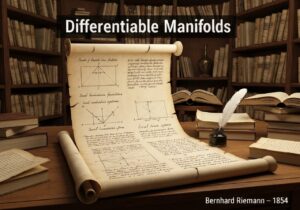A second-order linear elliptic partielles Differential equation that describes systems in a steady-state or equilibrium condition. It is written as [Latex]nabla^2 u = 0[/latex] or [latex]Delta u = 0[/latex], where [latex]nabla^2[/latex] (or [latex]Delta[/latex]) is the Laplace operator. Solutions, called harmonic functions, are the smoothest possible functions and represent potentials in fields like electrostatics, gravitation, and fluid flow.
Laplace-Gleichung
- Pierre-Simon Laplace
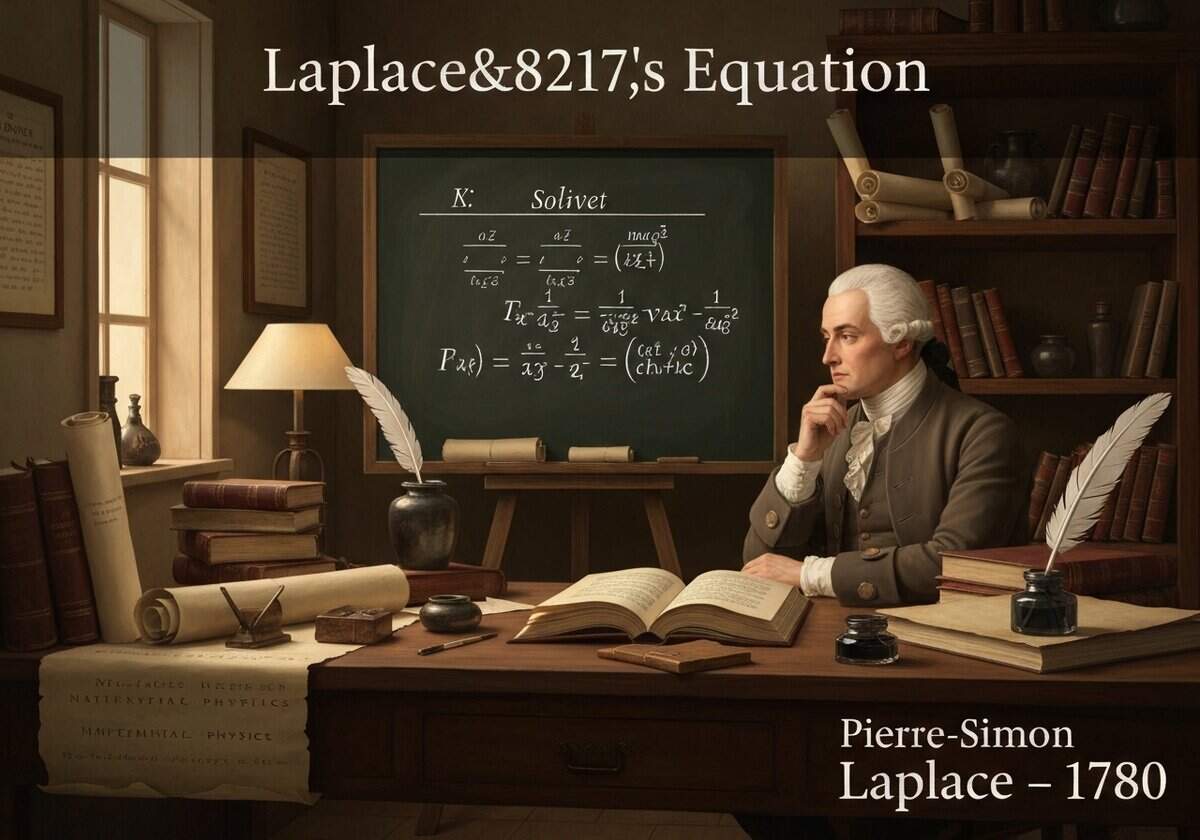
Laplace’s equation is the canonical elliptic PDE. It arises in numerous physical contexts where a quantity is in equilibrium and its value at a point is the average of its values in the surrounding neighborhood. This averaging property is a defining characteristic of its solutions, known as harmonic functions. A direct consequence is the ‘maximum principle’ for harmonic functions, which states that a non-constant solution cannot attain its maximum or minimum value in the interior of its domain; these extrema must lie on the boundary. This prevents, for example, a hot spot from existing in a region of steady-state heat flow unless there is a source there (which would violate [latex]nabla^2 u = 0[/latex]).
Solutions to Laplace’s equation are infinitely differentiable (analytic) even if the boundary conditions are not. This is a remarkable smoothing property, even stronger than that of the heat equation. The problem of finding a solution to Laplace’s equation in a domain given the values of the solution on the boundary is known as the Dirichlet problem. The related Neumann problem specifies the normal derivative on the boundary.
Unlike the time-dependent heat and wave equations, Laplace’s equation is typically solved for boundary value problems, where the entire boundary of a spatial domain influences the solution at every interior point simultaneously. This ‘global’ dependence contrasts with the causal, time-marching nature of parabolic and hyperbolic equations.
Typ
Unterbrechung
Verwendung
Vorläufersubstanzen
- newton’s law of universal gravitation
- coulomb’s law of electrostatics
- Konzept eines Potentialfeldes durch Lagrange
- Entwicklung der mehrdimensionalen Analysis und des Laplace-Operators
Anwendungen
- Elektrostatik zur Berechnung des elektrischen Potenzials in ladungsfreien Bereichen
- Gravitation zur Bestimmung des Gravitationspotentials
- stationäre Wärmeleitung
- inkompressible und rotationsfreie Fluidströmung
- Beschreibung der Form eines Seifenfilms, der über einen Drahtrahmen gespannt ist
Patente:
Mögliche Innovationsideen
!Professionals (100% free) Mitgliedschaft erforderlich
Sie müssen ein Professionals (100% free) Mitglied sein, um auf diesen Inhalt zugreifen zu können.
VERFÜGBAR FÜR NEUE HERAUSFORDERUNGEN
Maschinenbauingenieur, Projekt-, Verfahrenstechnik- oder F&E-Manager
Kurzfristig für eine neue Herausforderung verfügbar.
Kontaktieren Sie mich auf LinkedIn
Integration von Kunststoff-Metall-Elektronik, Design-to-Cost, GMP, Ergonomie, Geräte und Verbrauchsmaterialien in mittleren bis hohen Stückzahlen, Lean Manufacturing, regulierte Branchen, CE und FDA, CAD, Solidworks, Lean Sigma Black Belt, medizinische ISO 13485
Wir suchen einen neuen Sponsor
Ihr Unternehmen oder Ihre Institution beschäftigt sich mit Technik, Wissenschaft oder Forschung?
> Senden Sie uns eine Nachricht <
Erhalten Sie alle neuen Artikel
Kostenlos, kein Spam, E-Mail wird nicht verteilt oder weiterverkauft
oder Sie können eine kostenlose Vollmitgliedschaft erwerben, um auf alle eingeschränkten Inhalte zuzugreifen >Hier<
Historischer Kontext
Laplace-Gleichung
(wenn das Datum nicht bekannt oder nicht relevant ist, z. B. "Strömungsmechanik", wird eine gerundete Schätzung des bemerkenswerten Erscheinens angegeben)
Verwandte Erfindungen, Innovationen und technische Prinzipien
